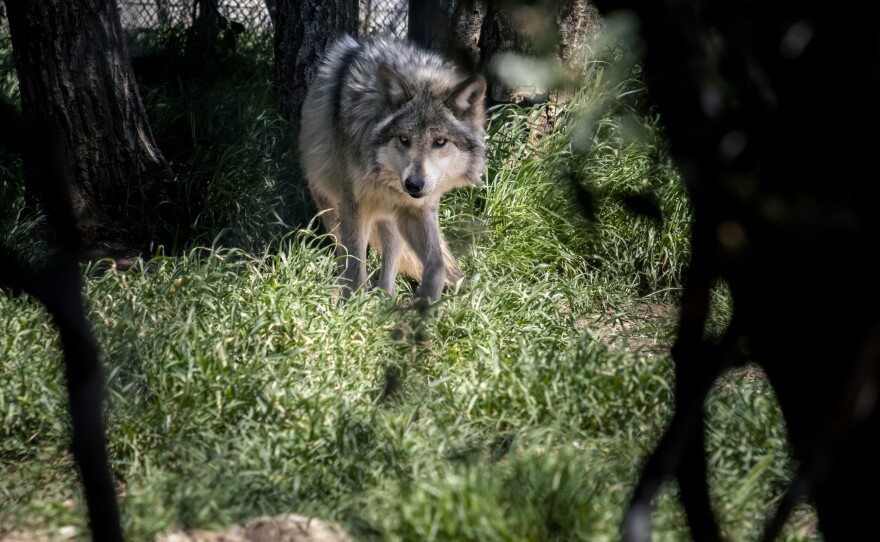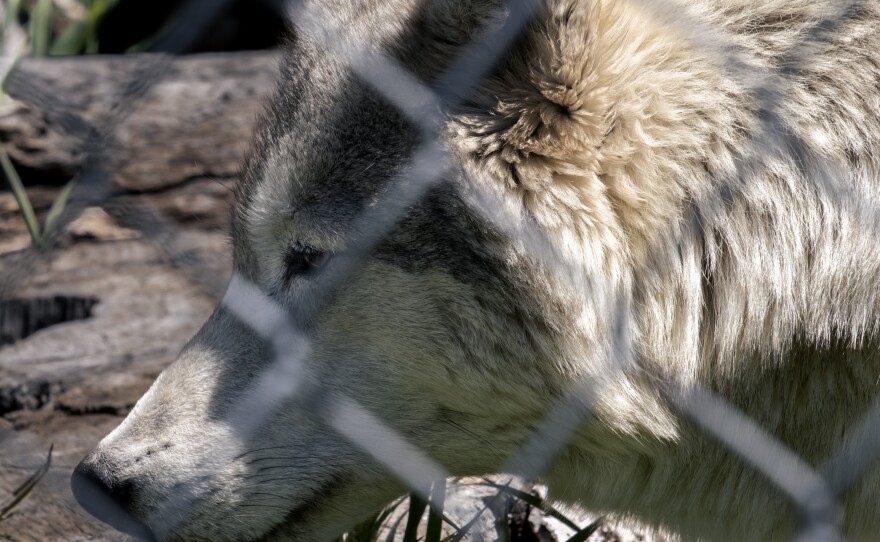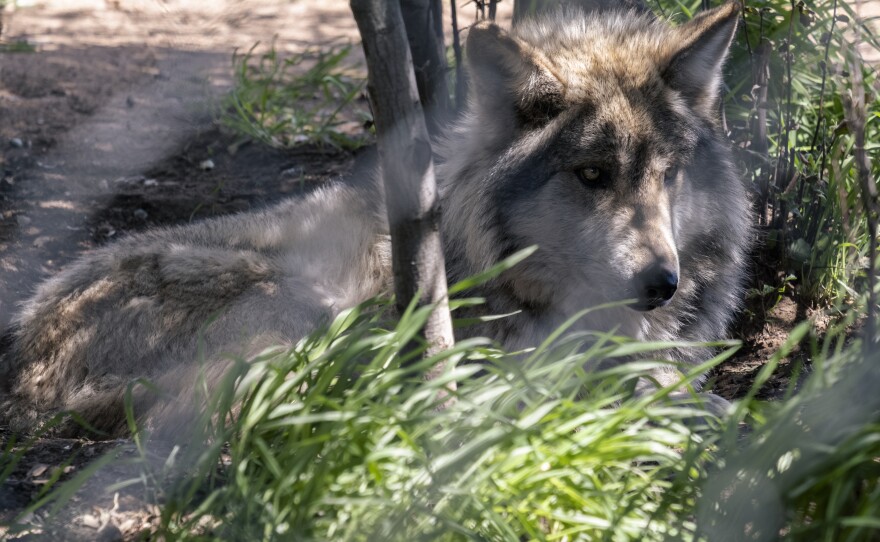
It's something of a miracle the Mexican gray wolf is still around.
By 1977, the U.S. government found only 13 wolves in New Mexico and Arizona. That’s when the U.S. Fish and Wildlife Service initiated a binational effort with Mexico to save them.
It was also the year a UC San Diego biologist and his wife bought 50 acres of land just outside Julian and purchased a couple of wolf pups. Their pack grew, and their property transformed into the California Wolf Center.

In 1997, the Wolf Center joined the Mexican Gray Wolf Species Survival Plan. A little more than 25 years later, a milestone was reached.
The U.S. Fish and Wildlife Service reports in 2022, for the first time, the number of Mexican gray wolves in the wild surpassed 200 — 241, to be exact. The number could be even higher because some might have been missed in the count.
The Wolf Center was an integral part of that population rebound.

“A huge milestone — a 23% increase from a year before ... We were thrilled to know there’s that much of a population increase," Wolf Center executive director Theresa Kosen said.
This came after years of hard work.
“For a long time, it was in question whether or not it was gonna work," said Ciera MacIsaac, the center’s wolf care coordinator.
The Wolf Center offers scheduled and private tours of the conservation facility at its visitor's center and nature store in downtown Julian. The tours are meant to help educate the public on the importance of conserving the Mexican gray wolf population.
Part of MacIsaac's job involves giving tours at the Wolf Center.

"We have three Mexican gray wolves for guests to view," she said while giving a tour of the center's ambassador Mexican gray wolf habitat.
Ambassador Mexican gray wolves are wolves available for public viewing. Others are kept away from visitors and are seen only by caretakers like MacIsaac.
The wolves at the center are not socialized because the goal is to return them to the wild — but with one caveat.
“In the United States, we can’t do adult releases. We can only do the cross-fostering of puppies," MacIsaac said. "But in Mexico, they do adult releases, so our guys still have the potential to go out into Mexico and help the wolf population in Mexico,"

While the Mexican gray wolves are at the center, MacIsaac uses what is known as "enrichment." It's an important factor for the wolves' physical and mental health.
“That could be a food item, a scent item, something that they can physically interact with ... So, we’ll see if they enjoy something a little different," MacIsaac said as she brought the scented items up to the enclosure's fence. "It’s lemon and ginger tea, but we also have some mint leaves. I have some food enrichment if we decide that we don’t want any scent enrichment."
The wolves showed little interest in the scent enrichment, but the fish-infused ice cubes were a big hit.

The Wolf Center is also the home of two North American gray wolves. They’re also an endangered species but further along in their recovery than their Mexican gray wolf cousins.
“Poppy and Yana are mother and daughter," MacIsaac said as two wolves ran up to the fence.
Their food enrichment was raw chicken wings, a favorite of the mother-daughter pair.
Along with caring for and breeding wolves, Kosen said an important part of restoring wild wolf populations entails not only working with other wolf conservation programs but also with ranchers.
“Ranchers have a stake here, too," she said. "They have land and they want the best for their cattle, so it’s got to be a win-win for everybody."
Kosen admitted it was a tough challenge, but she said progress was being made between the wolf conservation community and California ranchers.
For now, people like her, MacIsaac and everyone else who works toward the conservation of wolves are happy to celebrate a great achievement: the rebound of the Mexican gray wolf, once nearly extinct but now on the road to recovery.





